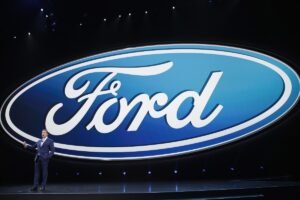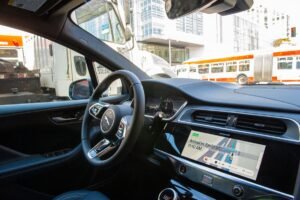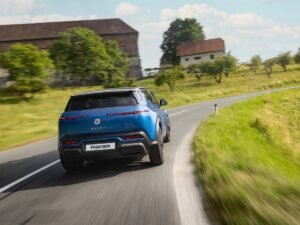Inversion Space is an appropriately named startup, with a primary focus that differs from most companies in the space industry. Instead of trying to get things into space, their main concern is bringing them back to Earth. Inversion envisions transforming the ultimate high ground into a “transportation layer for Earth,” providing ultra-fast and on-demand deliveries to anywhere on the planet.
The aim is to send up fleets of earth-orbiting vehicles that will be able to shoot back to Earth at Mach speeds…and deliver cargo in minutes.
This may sound like a lofty goal, but it has the potential to revolutionize terrestrial cargo transportation. To achieve this, Inversion has developed a pathfinder vehicle called Ray, which will serve as a precursor to a larger platform set to debut in 2026. Ray will take its first journey to space this October, on SpaceX’s Transporter-12 ride share mission, paving the way for Inversion’s future plans.
Ray is a small vehicle, about twice the diameter of a standard frisbee. Its time spent in space will vary from one to five weeks, depending on factors such as weather and orbit alignment. In a recent interview, Inversion’s CEO Justin Fiaschetti explained that the purpose of this first mission is three-fold.
The three phases are:
- Initial on-orbit phase: where the spacecraft will power on, charge its batteries, and hopefully send telemetry to the ground.
- Use of onboard propulsion system to slow down and start losing altitude to initiate reentry into the atmosphere.
- Supersonic drogue parachute deployment and main parachute deployment to slow down the capsule for a soft splashdown off the coast of California.
Inversion has taken on the impressive task of designing and building almost all components of the Ray vehicle in-house, including the propulsion system, structure, and parachutes. This last component is particularly noteworthy, as not many space companies design their own parachutes, and it is a difficult engineering feat. Last year, Inversion’s engineering team successfully completed qualification testing for the deployment and parachute systems.
The company has designed and built almost all of the Ray vehicle in-house…allowing us to scale very quickly and meet our customer needs.
Fiaschetti attributed the company’s rapid progress to strong vertical integration, stating, “The purpose of our Ray vehicle is to develop technology for our next-gen vehicle. As such, we’ve built basically the entire vehicle in-house. What we saw was that if we can build in-house now, do the hard thing first, that allows us to scale very quickly and meet our customer needs.”
While Ray is a passive reentry vehicle without active controls, the company’s larger next-gen vehicle, Arc, will have an impressive level of accuracy. Fiaschetti described it as having “football field-level” precision. Inversion was founded in 2021 by Fiaschetti and CTO Austin Briggs, who have known each other since they sat next to each other at Boston Universty’s freshman matriculation ceremony.
They met for the first time when they sat next to each other at a Boston University freshman matriculation ceremony.
Briggs went on to become a propulsion development engineer at ABL Space Systems, while Fiaschetti had engineering roles at Relativity and SpaceX. The idea for Inversion was initially discussed when the two were roommates in southern California.
The company went through Y Combinator in 2021 and closed a $10 million seed round in November of that year. Since then, they have grown to 25 employees and operate out of a 5,000-square-foot facility in Torrance, California. Inversion also owns five acres of land in the Mojave Desert, where they conduct engine testing. The startup’s growth and the financing for its first mission have all been funded by its seed round.
Inversion sees potential markets in both government agencies and private companies. Both segments could benefit from Inversion’s reusable platform as an on-orbit testbed or as a delivery vehicle to a private commercial space station. The company is focused on pushing reusability and duration-on-orbit to the maximum to reduce costs and support various mission profiles.
The company plans to fly their next-gen vehicle, Arc, for the first time in 2026. While Fiaschetti and Briggs declined to provide too many details on the spacecraft, Inversion’s website states that it will be able to carry over 150 kg of cargo and provide “proliferated” delivery in space.
“We are testing hardware consistently. We’re developing an infrastructure to be able to scale ourselves. Just as our decision to bring parachutes in-house was a decision because the parachutes are so directly applicable to what we’re building, it’s making those kinds of key decisions that allows us to move much faster than another reentry vehicle would take much longer to develop,” Fiaschetti said.
Fiaschetti believes that Inversion’s ability to make strategic decisions and vertically integrate their processes has enabled them to move quickly towards their goal of creating a transportation layer for Earth. With their first mission just months away, it will be exciting to see the progress that this innovative startup makes in the years to come.








